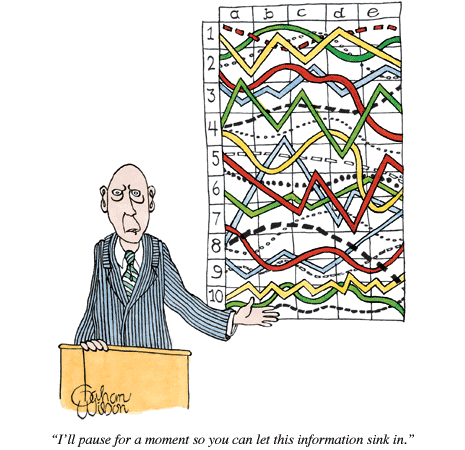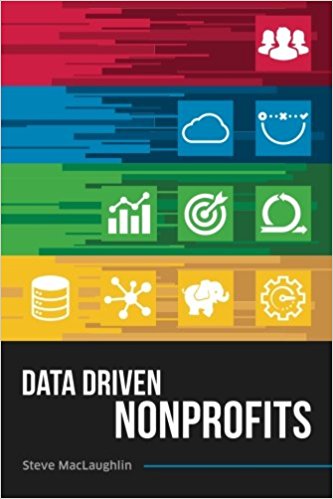“Four databases, they seriously have four databases?”
Our client review session was off to a rocky start.
“How is that even possible? Does every department have their own database?”
To my surprise the answer to that question was a resounding “yes,” at which point I threw my hands up in the air.
Frequently, and fortunately, I get to spend a lot of my time partnering either directly with nonprofit professionals, or with our company’s account managers who work hand in hand with nonprofit staff to calculate key fundraising metrics and find trends in donor giving patterns. This process usually entails setting up an organization with a Fundraising Report Card® subscription, helping them export and upload their donor data into their new account, and then walking through what trends we can identify together.
Sometimes, though, a nonprofit pro makes the process even simpler and instead simply sends an email with anonymous donor data to their account manager who crunches the numbers and returns a board-ready report. And, although I don’t get the chance as often as I’d like, when I do have the time, I like to work with our account management team to see what trends we can find and identify together in our clients’ data.
Simple enough, right?
Well, the excerpt above stems from a recent experience I had with one of our account managers. This account manager received data from a director of development they work closely with and they wanted to loop me into the process.
You can imagine my surprise (and frustration) when we started analyzing this particular client’s fundraising metrics.
Nothing seemed to make sense.

After running the datafile they provided us with through the Report Card I was dumbfounded. Over the course of 18 years, this organization had some years with 10,000+ acquired donors, and other years where they acquired only 6. I skipped “confused” and immediately went to “disappointed.”
I turned to the account manager I was reviewing the data with and said, “what file did we just upload?”
She responded, “this is all donations from one of their databases that stores all their check contributions.” My interest was piqued, “and where is their data for all other forms of giving?” I asked.
“Those are in separate databases with different vendors.”
“And we can’t get access to that information?” I followed along.
“We can, the issue is they don’t have constant donor IDs between all the different vendors…”
My heart sunk.
We couldn’t provide this organization with any meaningful analysis of their fundraising performance. We had incomplete information. And, if we could get our hands on all of their fundraising data we wouldn’t be able to do much with it. All those different ID numbers would make it nearly impossible to match up “who’s who” between the different systems. (Remember, these data points are real people we’re talking about here.)
Analyzing, scrutinizing and reporting fundraising metrics is great, but if you don’t have organized data to start with you’re setting yourself up for disaster. Have you ever heard the saying, “garbage in garbage out?” It’s the truth. And, with that in mind, here are three signs you probably shouldn’t be trying to analyze your fundraising data right now.
3 Signs You’re Not Ready to Be a Data Driven Nonprofit
1. Your data is spread across many different databases, and you have no consistent method for aggregating data
If your organization pays myriad vendors to store donation data in multiple, siloed databases you probably aren’t ready to be “data driven.” Siloed is the key word here. Recall our story from above (four databases with no consistent donor ID numbers). The issue that organization faces is not that they pay multiple vendors to do a variety of similar (but different) things, instead what holds them back from becoming data-driven is that all of their disparate systems can’t communicate with one another (no constant ID numbers).
Siloed data makes for a less nimble organization. Let’s say for example that you want to perform a “recapture campaign,” a series of targeted appeals to recently lapsed donors in an attempt to “reactivate,” or “recapture” them. If all of your data lives together in one system, you can easily identify the lapsed donors you want to target. But if you keep your donor data in separate systems, say by department or gift type, you’ll have to spend a week or more aggregating all your spreadsheets, cleaning your data, and developing unique donor IDs. That’s valuable time that could be spent elsewhere, and it introduces plenty of opportunities for error.
This is the risk you run when you store your giving data in a variety of applications. There are certainly sound reasons for siloing data by department or donation type, but it is crucial to acknowledge the headache that this can cause down the road. That’s not to say you can’t get away with it (constant ID numbers across all systems will do the trick), but it definitely can muddy the waters.
2. No clear “leader,” or “champion”

The second “key ingredient” for becoming data driven non profit is having an internal leader or champion to spearhead the analysis effort.
Having access to data is one thing, but having someone internally who is committed to mining that information for insights and benefit to the organization is another.
Without one person or department taking ownership over data analysis it tends to get lost in the shuffle. The “lack of time” paradigm we all face can hold you back when you’re wearing many hats and overseeing a variety of responsibilities. But, if your goal is to realize the full potential of being data driven in fundraising, you’ll need an internal leader or champion to take the lead. If you find yourself saying, “I would do it, but I don’t have the time,” read this.
3. Data is not valued
The third hurdle to data-driven fundraising success that I see much too frequently is a lack of “data respect” among leadership at an organization. That’s not to say that leaders on the board don’t respect or value the work that nonprofit staff complete, rather it is when leadership neglects or misunderstands the significance of data analysis in their day to day roles.

Some board members view fundraising metrics, trend spotting, and data-driven fundraising as a distraction from traditional development activities. Thus, when an annual or quarterly board meeting comes around, and a director of development attempts to share their good news regarding an increase in donor lifetime value, they are chided rather than lauded.
This type of culture is not conducive to thinking strategically with data-backed decision making. Instead, this is the type of culture sweeps bad numbers “under the rug,” ignores the realities of their fundraising data, and turns a cold shoulder towards nonprofit staff that attempt to push back.
Applying this at your shop
Are you ready to be more data driven? That’s an awfully good question. Did any of these stories remind you of something happening at your own organization? If so, then your answer to the initial question may be a “no.”
That’s okay though, because all of these “signs you aren’t ready to be a data driven nonprofit” are not set in stone. If you haven’t already, consider reading Steve MacLaughlin’s Data Driven Nonprofits. That book is full of great stories and anecdotes of how other organizations, similar to yours overcame these hurdles and ultimately went on to use data for great benefit and success.
We talk about data, fundraising metrics and creating a strategic plan a lot here on the Fundraising Report Card® blog. Hopefully this post helps frame your mindset when you go to crunch numbers the next time around.






This article was accurate in 1995 but not today. Today organizations need best of breed in applications and then relay on technology to pull together information in meaningful ways. In addition, unstructured data is becoming more powerful for nonprofits then the traditional structured data you reference.
Hi @jaygoularttampajay
I’m intrigued, could you please elaborate on “unstructured data is becoming more powerful for nonprofits”? Are you referring to using machine learning software like Watson and rapid insight? I’m interested in also learning about the power of unstructured data ? in what ways? How do you find insights and learnings from unstructured data?